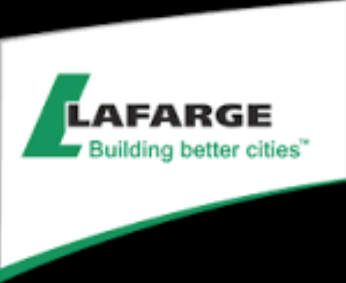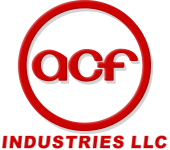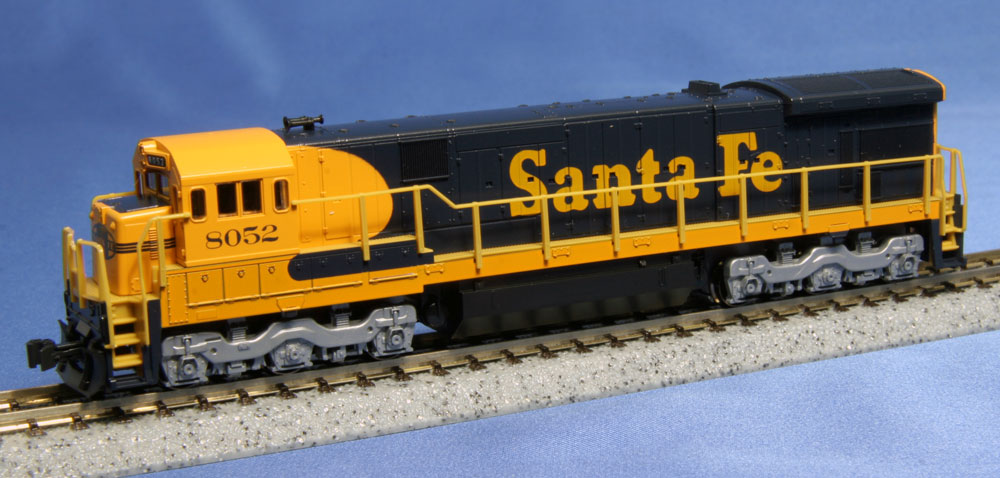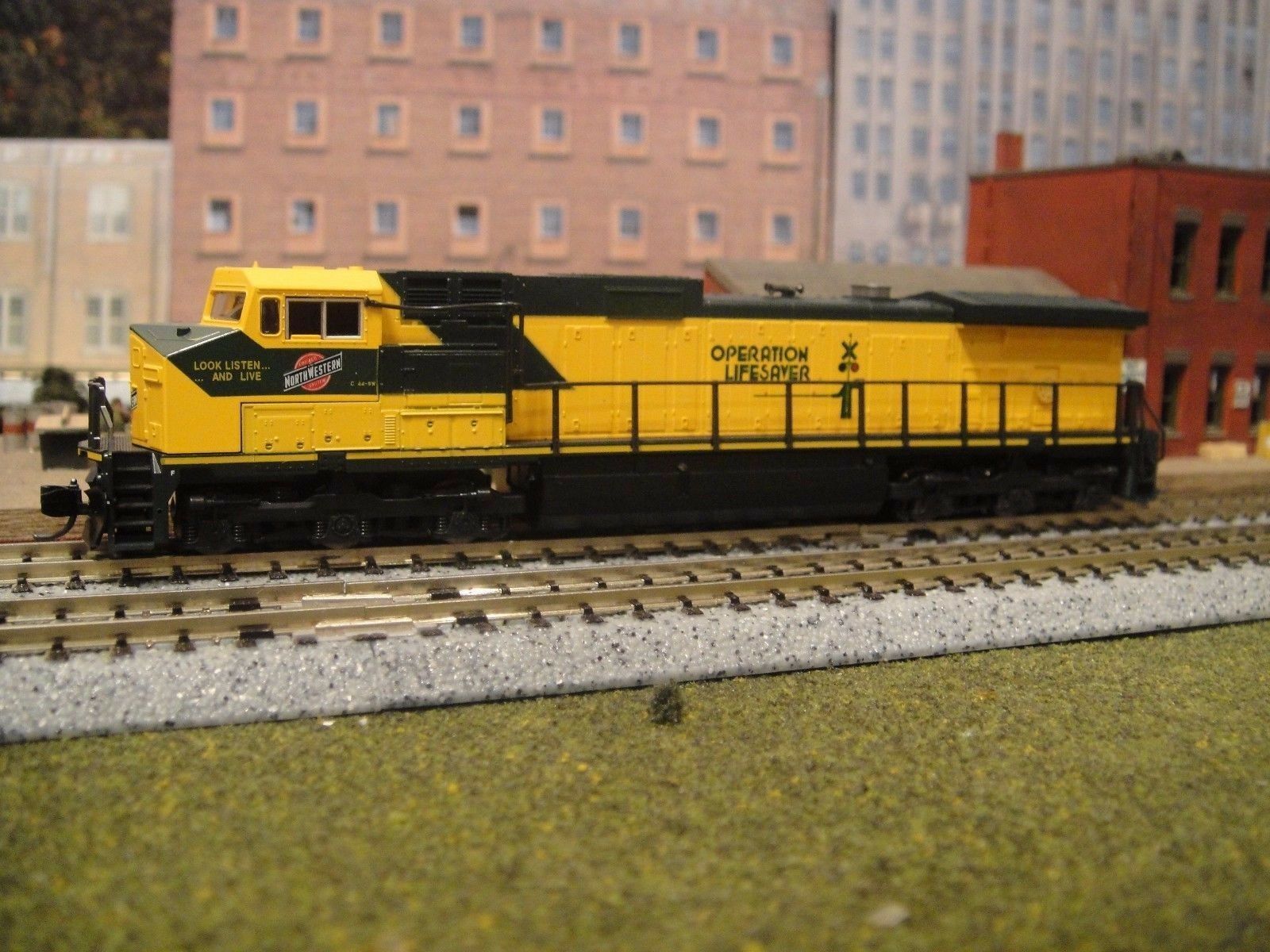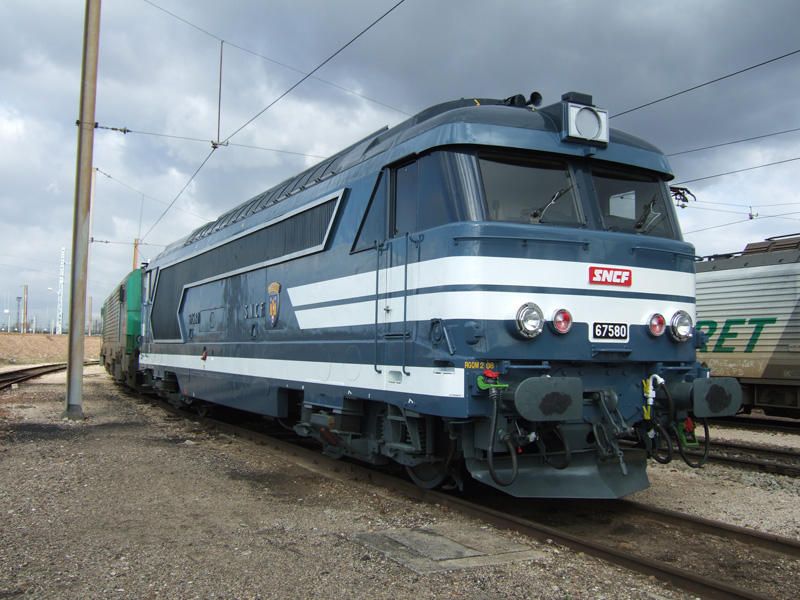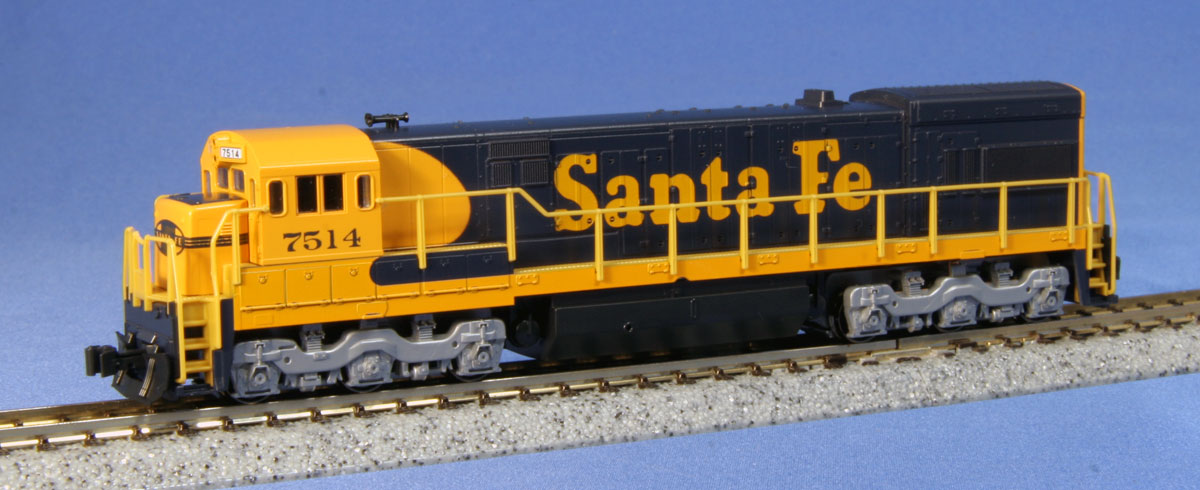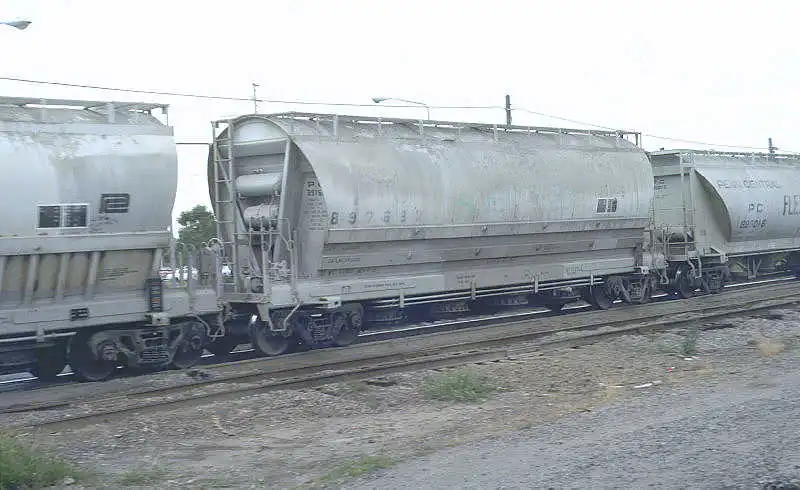Model Information: Built between August 1964 and June 1966 the American Car & Foundry (ACF) 3500 cu. ft. covered hopper was an early
innovator in pressure differential unloading and a marketing masterclass thanks to the “Flexi Flo” tag coined by the car’s
biggest customer, the New York Central railroad.
Prototype History: Built between August 1964 and June 1966 the American Car & Foundry (ACF) 3500 cu. ft. covered hopper was an early
innovator in pressure differential unloading and a marketing masterclass thanks to the “Flexi Flo” tag coined by the car’s
biggest customer, the New York Central railroad.
New York Central specified a car with a 315,000 pound gross weight (315K) to take full advantage of the heavy-duty capability of its core mainlines. The cars had a load limit of 245,200 lbs., allowing them to hold six truckloads of product each – a critical factor when trying to win business back from the highway. The specific gravity of powdered cement dictated a 3500 cubic foot capacity. To emphasize how far ahead of the times NYC was consider that the standard railcar gross weight was 220K, there still isn’t a national 315K network in 2020 and some short lines and regional railroads are still struggling to get their bridges upgraded to 286K.
The cars were delivered to NYC in four batches as outlined in the roster below. They each differed slightly from each other. The most obvious spotting characteristic were the vertical side ribs on the first batch of 25 cars. One has to look closely to spot the differences between the next two lots. The final NYC group was made up of five 3600 cubic foot tank type covered hoppers built for BF Goodrich. They are included for reference but are a totally different car design.
New York Central specified a car with a 315,000 pound gross weight (315K) to take full advantage of the heavy-duty capability of its core mainlines. The cars had a load limit of 245,200 lbs., allowing them to hold six truckloads of product each – a critical factor when trying to win business back from the highway. The specific gravity of powdered cement dictated a 3500 cubic foot capacity. To emphasize how far ahead of the times NYC was consider that the standard railcar gross weight was 220K, there still isn’t a national 315K network in 2020 and some short lines and regional railroads are still struggling to get their bridges upgraded to 286K.
The cars were delivered to NYC in four batches as outlined in the roster below. They each differed slightly from each other. The most obvious spotting characteristic were the vertical side ribs on the first batch of 25 cars. One has to look closely to spot the differences between the next two lots. The final NYC group was made up of five 3600 cubic foot tank type covered hoppers built for BF Goodrich. They are included for reference but are a totally different car design.
Road Name History: Four businesses segments: Cement, Aggregates, Ready-Mix Concrete and Solutions & Products, and hold leading positions in all regions of the globe, with around 75,000 employees in around 80 countries. LafargeHolcim experts solve the challenges that customers face around the world, whether they are building individual homes or major infrastructure projects. Demand for our materials and solutions is driven by global population growth, urbanization, improved living standards and sustainable construction.
Brand/Importer Information: Rapido Trains Inc. is a high-end manufacturer of model trains and accessories in HO, OO and N (North American 1:160 and British 1:148) scales. The firm's mission is to recreate the entire rail travel experience, from fully-detailed interiors and under-frames on models to fully-wired telephone poles for model railroads.
The name RAPIDO was introduced by Canadian National in 1965 to headline the railway's high-speed intercity passenger services. Until the mid-1980s, RAPIDO stood for fast schedules, frequent trains, and superb service.
Today, Rapido Trains continues the RAPIDO concept with state-of-the-art models and attention to fine detail. This company is not related to the venerable (and now defunct) German manufacturer Arnold Rapido, nor the present-day Arnold (which is owned by the United Kingdom's Hornby), Canadian based Rapido Trains was founded in 2003.
The name RAPIDO was introduced by Canadian National in 1965 to headline the railway's high-speed intercity passenger services. Until the mid-1980s, RAPIDO stood for fast schedules, frequent trains, and superb service.
Today, Rapido Trains continues the RAPIDO concept with state-of-the-art models and attention to fine detail. This company is not related to the venerable (and now defunct) German manufacturer Arnold Rapido, nor the present-day Arnold (which is owned by the United Kingdom's Hornby), Canadian based Rapido Trains was founded in 2003.
Item created by: CNW400 on 2022-08-12 21:54:50. Last edited by George on 2025-03-24 07:23:10
If you see errors or missing data in this entry, please feel free to log in and edit it. Anyone with a Gmail account can log in instantly.
If you see errors or missing data in this entry, please feel free to log in and edit it. Anyone with a Gmail account can log in instantly.




